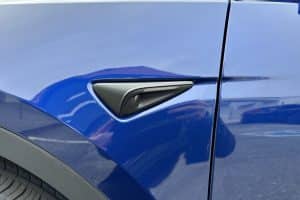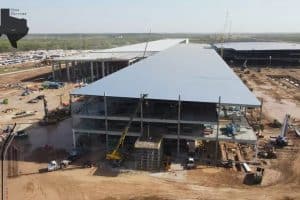The issue of solar panel size came up at a joint conference of two solar technology industry groups earlier this month. An insightful presentation on the ups and downs of larger solar panels was given by Dennis She, SVP of LONGi Solar, concluding that larger sizes aren’t necessarily better. The website explaining his presentation was sparse on specifics, but we were able to fill in the gaps with our understanding of the clean tech and construction industry and help readers describe it. It also gives us some insight into Tesla’s Solar Roof’s potential market advantages.
“For large scale PV power stations, increasing the power of PV modules by increasing the wafer area is, to a certain extent, beneficial to the reduction of BOS costs and LCOE,” Mr. She said. “That said, the size of the module is not a question of bigger being better. It is necessary to consider in depth the boundary conditions of manufacturing costs, transportation, reliability and manual installation.”
He clarified in plain English that larger panels (which generate higher wattages) would have economic benefits in manufacturing, as the cost per watt will potentially go down. Measures that only need to occur once per panel will occur less often and economies of scale would be helpful. However, manufacturing in a factory does not exist in a vacuum.
Elsewhere in the supply chain, there are many explanations why bigger panels will end up costing more per watt by the time all is said and finished.
Second, with bigger panels, regular intermodal shipping containers are just not going to fit well. A typical 40 foot high cube shipping container’s door height limits cell size to approximately 1.13 meters (about 3 foot 8 inches). Trying to produce larger panels would mean that shipping costs would go up a lot, which could probably end up canceling out any savings from making larger panels.
Second, producing glass is a challenge. Glass factories do not produce glass panels big enough for the larger 600 watt panels that some manufacturers would like to make, she said. So, if you really wanted to install them in any quantity, you would have to pay for the expenses of retooling entire glass manufacturing plants (that would have to adjust their supply chains, along with everything else), making panels more costly. Again the disadvantage in the supply chain could wipe out the savings of larger modules.
Another worry is installation. In order to install panels of the size they already install today, solar installation companies are used. Assuming that somehow the last two problems have been solved (a high order), now you have to get the local installers to change what they do. They not only need different bracketing configurations, but they would probably lose flexibility on how many panels will fit on all the roofs that exist out there in different shapes. Often it may also be more difficult to move the cells to the installation site, with some installers requiring various trucks and/or trailers.
Finally, Mr. She shared that for the larger panels, larger cells end up being less effective in generating electricity, which compounds all of the problems above.
Almost every one of these problems reveals just how smart Tesla was with its design of the Solar Roof. Throughout the entire supply chain, smaller panels (the size of a shingle) offer a lot more flexibility. They are easier to transport, do not need large glass panes, and can be mounted on any roof shape for optimum performance. With lower resistance, smaller panels can also be more electrically efficient.
Want to buy a Tesla Model 3, Model Y, Model S, or Model X? Feel free to use my referral code to get some free Supercharging miles with your purchase: http://ts.la/guanyu3423
You can also get a $100 discount on Tesla Solar with that code. Let’s help accelerate the advent of a sustainable future.





